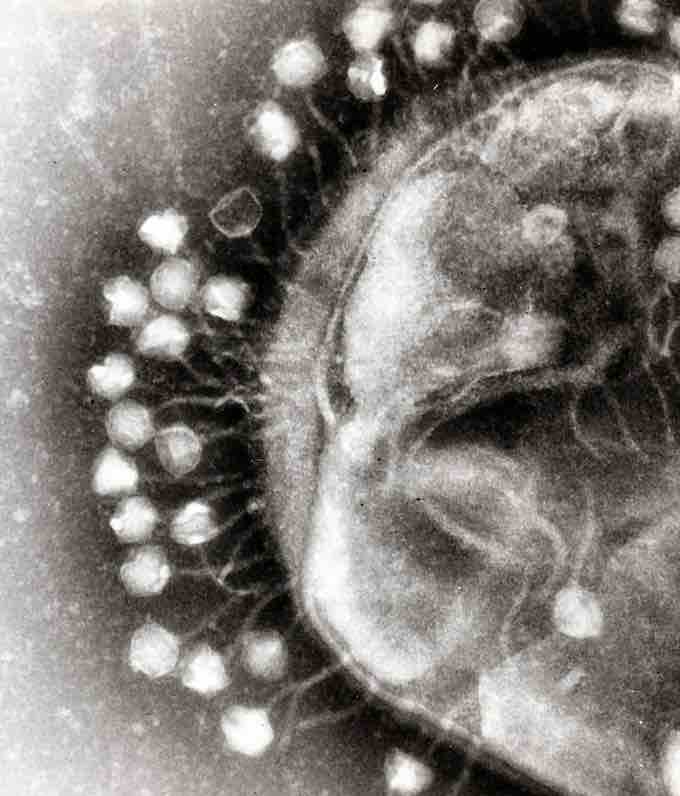Strategies of Replication
Virus or phage cultures require host cells in which to multiply. For bacteriophages, cultures are grown by infecting bacterial cells . The phage can then be isolated from the resulting plaques in a lawn of bacteria on a plate.

Bacteriophages infecting a bacteria
Virus or phage cultures require host cells in which to multiply. For bacteriophages, cultures are grown by infecting bacterial cells. The phage can then be isolated from the resulting plaques in a lawn of bacteria on a plate.
A bacteriophage is any one of a number of viruses that infect bacteria . They do this by injecting genetic material, which they carry enclosed in an outer protein capsid, into a host bacterial cell. The genetic material can be ssRNA, dsRNA, ssDNA, or dsDNA ('ss-' or 'ds-' prefix denotes single-strand or double-strand), along with either circular or linear arrangements.

Bacteriophage
Diagram of how some bacteriophages infect bacterial cells.
To enter a host cell, bacteriophages attach to specific receptors on the surface of bacteria, including lipopolysaccharides, teichoic acids, proteins, or even flagella. This specificity means a bacteriophage can infect only those bacteria bearing receptors to which they can bind, which in turn determines the phage's host range. Host growth conditions also influence the ability of the phage to attach and invade them. As phage virions do not move independently, they must rely on random encounters with the right receptors when in solution within blood, lymphatic circulation, irrigation, soil water, or other environments..
Phages may be released via cell lysis, by extrusion, or, in a few cases, by budding. Lysis, by tailed phages, is achieved by an enzyme called endolysin, which attacks and breaks down the cell wall peptidoglycan. An altogether different phage type, the filamentous phages, make the host cell continually secrete new virus particles. Released virions are described as free, and, unless defective, are capable of infecting a new bacterium. Budding is associated with certain Mycoplasma phages. In contrast to virion release, phages displaying a lysogenic cycle do not kill the host but, rather, become long-term residents as prophage.